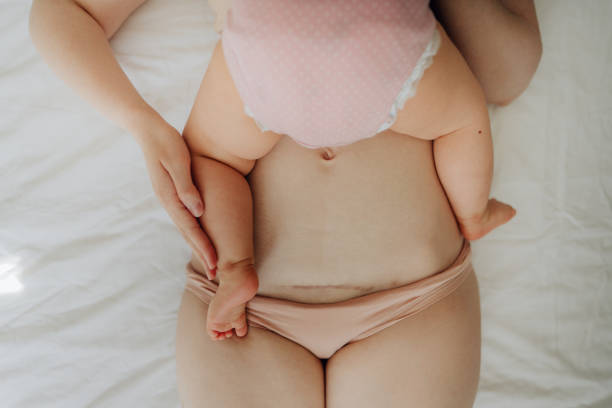Introduction:

Surgeons perform a Cesarean section, commonly referred to as C-section, to deliver a baby by making an incision in the mother’s abdomen and uterus
While vaginal delivery is the preferred method for childbirth in most cases, C-sections may be necessary for various medical reasons. This article provides a detailed overview of C-section delivery, including its indications, procedure, recovery, and potential risks.
Indications for C-Section:
a. Fetal Distress: If the baby shows signs of distress during labor, such as an irregular heartbeat or inadequate oxygen supply, a C-section may be performed to ensure a safe delivery.
b. Abnormal Positioning: If the baby is in a breech (buttocks or feet first) or transverse (sideways) position, a C-section is often necessary to avoid complications during delivery.
c. Maternal Health Conditions: Certain maternal health conditions, such as preeclampsia, placenta previa, or active genital herpes, may require a C-section to safeguard the health of the mother and baby.
d. Multiple Pregnancies: In cases of twins, triplets, or other multiple pregnancies, a C-section may be recommended due to the potential risks associated with vaginal delivery.
e. Previous C-Section.
The C-Section Procedure:
a. Preoperative Preparation: The patient is typically administered anesthesia, either through an epidural (regional anesthesia) or general anesthesia, to ensure a painless and comfortable surgery.
b. Incision: The surgeon makes an incision in the abdomen (usually a horizontal incision called a low transverse incision) and subsequently in the uterus.
c. Delivery of the Baby: The baby is carefully and gently lifted out through the incision in the uterus.
d. The surgeon removes the placenta and closes the incisions in the uterus and abdomen using sutures or staples.
e. Healthcare professionals closely monitor the patient in a recovery area and provide pain management, antibiotics, and assistance with breastfeeding as needed.
Recovery and Postoperative Care:
a. Hospital Stay: The length of the hospital stay following a C-section varies but is generally longer than that for vaginal delivery.
It typically ranges from 2 to 4 days, depending on the mother’s and baby’s condition.
b. Pain Management: Medications, such as analgesics or nonsteroidal anti-inflammatory drugs (NSAIDs), are prescribed to manage postoperative pain.
c. Incision Care: Proper wound care, including keeping the incision clean and dry, is essential to prevent infection and promote healing.
d. Physical Activity: Initially, rest and limited physical activity are advised, gradually progressing to light exercises as recommended by healthcare providers.
e. Breastfeeding: Breastfeeding can usually be initiated soon after the surgery, with proper support and positioning techniques to ensure comfort.
f. Emotional Support: The emotional recovery following a C-section is as important as the physical recovery. Women may experience a range of emotions, and seeking support from loved ones or healthcare professionals can be beneficial.
Risks and Complications:
a. Proper hygiene and antibiotic prophylaxis help minimize the risk of infection at the incision site or in the uterus following a C-section.
b. Healthcare providers take steps to minimize and manage blood loss during the C-section procedure, although it does involve more blood loss compared to vaginal births.
c. Surgical Injury: Although rare, there is a small risk of accidental injury to nearby organs during the surgery.
d. Blood Clots: Immobility during the recovery period increases the risk of blood clots, which can be reduced through early mobilization, compression stockings, and blood-thinning medications.
e. Respiratory Issues: Babies born via C-section may experience transient respiratory difficulties due to the absence of the squeezing action of vaginal delivery.
f. Future Pregnancy Risks: C-sections may slightly increase the risks associated with future pregnancies, such as placental complications and uterine rupture.
Conclusion:
Cesarean section is a surgical procedure performed when vaginal delivery poses risks to the mother or baby.
It provides a safe alternative for childbirth in various situations.
While C-sections have their own set of considerations and potential risks, advances in surgical techniques and postoperative care have significantly improved outcomes for both mothers and babies.
As with any medical procedure, it is crucial to discuss the benefits, risks, and alternatives with healthcare providers to make informed decisions regarding the mode of delivery.

